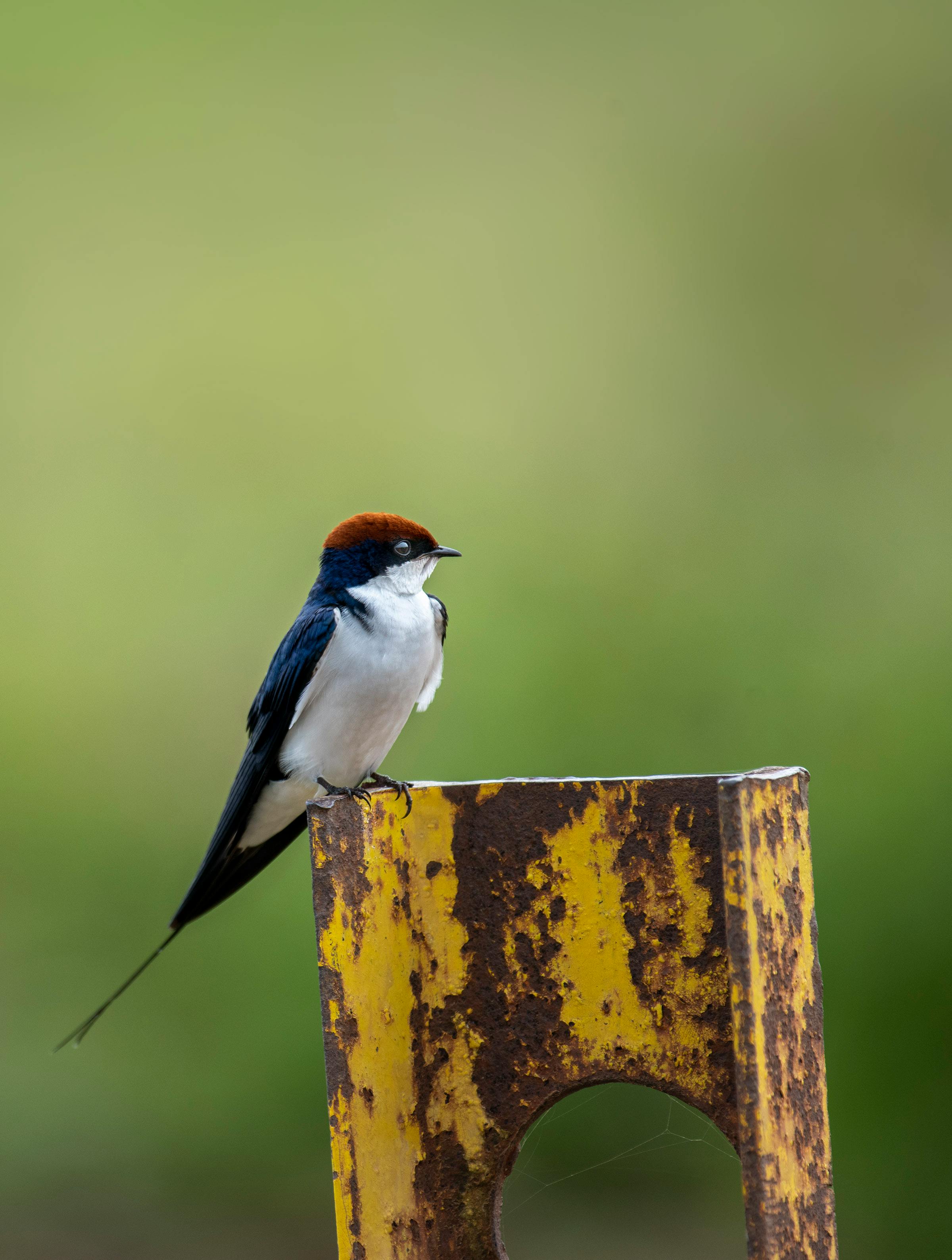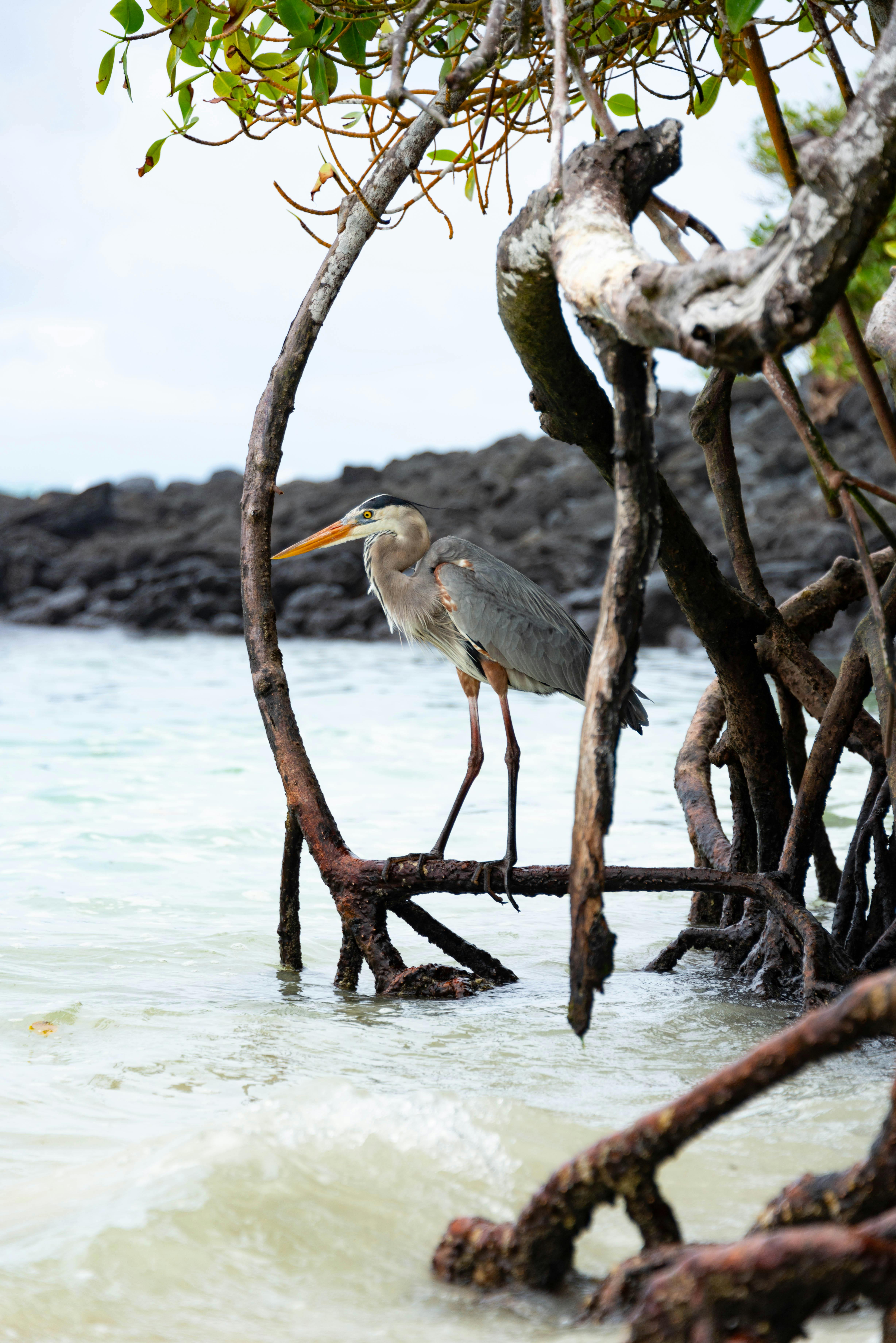When it comes to bird watching, having the right equipment can greatly enhance your experience. But with so many options available, it can be a bit overwhelming to decide between a scope or binoculars. Both have their own set of advantages, but which one is better? In this article, we explore the benefits of each and delve into the factors that might help you make an informed decision. Whether you’re a seasoned birder or just starting out, read on to discover whether a scope or binoculars will be your ideal companion in the fascinating world of bird watching.
Benefits of Using a Scope for Bird Watching
Enhanced Magnification
One of the primary benefits of using a scope for bird watching is the enhanced magnification it provides. A scope allows you to observe birds in great detail, bringing them closer to you and allowing you to see intricate features that may be difficult to see with the naked eye or through binoculars. This enhanced magnification is particularly useful when trying to identify bird species from a distance.
Longer Range
Scopes for bird watching are designed to have a longer range than binoculars. This means that you can observe birds that are further away without losing image clarity or focus. Bird watching often involves trying to spot elusive and rare species, and using a scope enables you to see these birds even when they are far away.
Sharper Image
Scopes have advanced lens technology that results in a sharper image compared to binoculars. The lenses in a scope are larger and have a greater capacity to gather light, which improves image quality and clarity. This is especially important when observing birds in low light conditions, such as early morning or dusk.
Zooming Feature
Most scopes come with a zooming feature that allows you to adjust the magnification levels. This versatility gives you the flexibility to zoom in and out, depending on the situation and the specific bird you are observing. Being able to adjust the magnification allows you to focus on small details or take in a wider view when needed.

Better Image Stability
Scopes are commonly used with a stable tripod, which provides excellent stability and reduces hand tremors that can cause image shaking. This stability is crucial when observing birds at high magnification levels where even slight movements can impact the clarity of the image. With a scope and tripod combination, you can achieve a steady view and enjoy a more immersive bird watching experience.
Benefits of Using Binoculars for Bird Watching
Wider Field of View
Binoculars offer a wider field of view compared to scopes, allowing you to see a larger area at once. This is particularly advantageous when you want to scan an area quickly or observe multiple birds simultaneously. The wider field of view enables you to spot birds that may be in your peripheral vision, resulting in a more comprehensive bird watching experience.
Portability and Convenience
Binoculars are generally more lightweight and compact than scopes, making them portable and easy to carry during bird watching expeditions. They can fit easily into a backpack or be worn around the neck with a strap, allowing for convenient access whenever you come across an interesting bird. Binoculars are also quick to set up and require minimal effort to start observing.
Ease of Use
Binoculars are user-friendly and require less skill and experience to operate effectively. They have a straightforward design and can be quickly adjusted to suit your eyesight, making them accessible for bird watching enthusiasts of all levels. Binoculars are a great option for beginners or those who prefer a simpler approach to bird watching.

Lower Cost
Compared to scopes, binoculars are generally more affordable, making them a cost-effective option for bird watchers on a budget. They provide a good balance between price and performance, making them accessible to a wide range of bird watchers. If you are just starting out or have budget constraints, binoculars are an excellent choice to begin your bird watching journey.
Less Skill Required
Using binoculars requires less skill and practice compared to scopes. Binoculars provide a wider depth of field, which means that objects at different distances can remain in focus simultaneously. This eliminates the need for constant focus adjustments when observing birds at varying distances, making it easier for beginners or those with less experience in bird watching.
Factors to Consider When Choosing between a Scope and Binoculars
Budget
One of the first factors to consider when choosing between a scope and binoculars for bird watching is your budget. Scopes tend to be more expensive than binoculars due to their advanced features and higher quality lenses. If you have a limited budget, binoculars may be a more affordable and practical choice. However, if you are willing to invest in a high-quality optic, a scope can significantly enhance your bird watching experience.
Purpose of Bird Watching
Consider your purpose for bird watching when deciding between a scope and binoculars. If you primarily want to identify and observe bird species from a distance, a scope with its superior magnification might be the better option. On the other hand, if you enjoy a broader view and want to scan the surroundings quickly, binoculars can provide the wider field of view you need.

Preferred Bird Watching Location
Think about the location where you plan to do most of your bird watching. If you frequent open spaces or spots with wide, open views, a scope can be advantageous in observing birds from a distance. However, if you enjoy bird watching in dense forests or areas with limited visibility, binoculars are more suitable for observing birds in their natural habitats, where a wider field of view is essential.
Physical Capabilities
Consider your physical capabilities when deciding between a scope and binoculars. Scopes are often heavier and require the use of a tripod for stability, which may not be suitable for individuals with limited strength or mobility. Binoculars, on the other hand, are more lightweight and easy to handle, making them a better choice for those with physical limitations.
Skill Level
Take into account your skill level in bird watching. If you are a beginner, binoculars are more forgiving and require less skill to use effectively. They provide a more user-friendly experience and allow you to develop your bird watching skills gradually. If you are an experienced bird watcher or have specific requirements for species identification or bird photography, a scope may offer the advanced features you need.
Types of Scopes and Binoculars for Bird Watching
Straight Scope
A straight scope is designed with a straight body, allowing for easy target acquisition and tracking of birds in various positions. It offers a more traditional viewing experience and is commonly used by bird watchers who prefer a straightforward design and ease of use.

Angled Scope
An angled scope features an angled eyepiece that provides a comfortable viewing angle. This design allows for a more ergonomic position when observing birds, especially when looking up at birds perched in trees or at an elevated angle. Angled scopes are popular among bird watchers who spend long hours observing birds or engage in bird photography.
Compact Binoculars
Compact binoculars are lightweight and portable, making them an ideal choice for bird watchers who want to travel light or have limited storage space. They offer convenience without compromising image quality and are suitable for casual bird watching or those who prefer a more compact option.
Full-size Binoculars
Full-size binoculars provide a more immersive bird watching experience with their larger objective lenses and wider field of view. They are preferable for bird watchers who prioritize optimal image quality and want to observe birds in detail. Full-size binoculars may be larger and heavier than compact models, but they provide superior image clarity and light-gathering capability.
Zoom Binoculars
Zoom binoculars offer the versatility of a variable magnification range. They allow you to zoom in and out to adjust the level of detail you want to observe. This flexibility is beneficial when you need to quickly switch between observing birds at different distances or when you want to observe both close-up details and a wider view.
Best Uses for a Scope in Bird Watching

Identifying Species from a Distance
When it comes to identifying bird species from a distance, a scope is a valuable tool. The enhanced magnification of a scope allows you to see details of the birds’ plumage, markings, or unique features that may not be visible with binoculars or the naked eye. This is particularly useful in situations where you encounter elusive or rare bird species that require precise identification.
Tracking Birds in Flight
Scopes excel at tracking birds in flight due to their longer range and image stability. When birds are soaring through the air or engaging in aerobatic displays, a scope enables you to follow their movements with ease. The enhanced magnification and sharper image quality of a scope make it possible to observe the nuances of birds’ flight patterns and behavior.
Bird Photography
If you’re interested in capturing stunning photographs of birds, a scope is a valuable tool. With a camera attachment or digiscoping adapter, a scope can be used in combination with a camera to capture intricate details and close-up shots of birds. The enhanced magnification and superior image quality of a scope provide the necessary clarity and precision for bird photography.
Best Uses for Binoculars in Bird Watching
Scanning the Surroundings
Binoculars excel at scanning the surroundings, allowing you to quickly explore a wide area for bird activity. Their wider field of view helps in spotting birds that may be hiding in vegetation or flying across the sky. Binoculars provide a comprehensive view that enables you to scan and survey the landscape, making them ideal for locating birds and identifying potential habitats.
Observing Birds in their Natural Habitats
Binoculars are well-suited for observing birds in their natural habitats, such as forests, wetlands, or coastal areas. Their wider field of view and ease of use make it easier to follow birds as they move through complex environments. Binoculars allow you to appreciate the interactions between birds and their surroundings, providing a more immersive bird watching experience.
Casual Bird Watching
For casual bird watching enthusiasts who want a simple and accessible tool, binoculars are an excellent choice. Their portability, ease of use, and wide field of view make them perfect for leisurely walks, backyard bird watching, or observing birds during picnics and outdoor activities. Binoculars provide a convenient way to enjoy and appreciate the beauty of birds without the need for complex equipment.
Tips for Using a Scope Effectively in Bird Watching
Set Up a Stable Tripod
To maximize the benefits of using a scope, it is essential to set it up on a stable tripod. This minimizes any shaking or movement that could impact the quality of the image and allows for steady and prolonged observation. Invest in a sturdy tripod that is suitable for your scope’s weight and adjust it to a comfortable viewing height.
Use a Spotting Scope with Appropriate Magnification
Choose a spotting scope with an appropriate magnification range for your bird watching needs. Consider the distance at which you will be observing birds and the level of detail you want to see. Higher magnification is useful for distant observations, but be mindful that it may also result in a narrower field of view and a shakier image. Find the right balance for your specific preferences.
Adjust the Focus Properly
Properly adjusting the focus is crucial for obtaining a clear and sharp image when using a scope. Take the time to familiarize yourself with the focus mechanism of your scope and practice achieving crisp focus on both nearby and distant subjects. Avoid rushing the focusing process and use small adjustments to find the optimal focus point.
Take Advantage of the Zoom Feature
If your scope has a zooming feature, make sure to utilize it effectively. Experiment with different magnification levels to find the best balance between detail and field of view for the specific bird or observation situation. Don’t hesitate to zoom in to observe fine features or zoom out to track birds in flight. The zoom feature allows for versatility and adaptability in your bird watching experience.
Practice Using the Scope
As with any tool, practice is key to using a scope effectively in bird watching. Set aside time to become familiar with the scope’s settings, focusing mechanisms, and zoom features. Practice observing birds at varying distances and in different lighting conditions. With time and practice, you will develop the necessary skills and techniques to maximize the capabilities of your scope.
Tips for Using Binoculars Effectively in Bird Watching
Choose the Right Magnification
Selecting the right magnification for your binoculars is essential. Consider the typical distance at which you will be observing birds and the level of detail you want to see. Lower magnification provides a wider field of view, making it easier to track moving birds or scan landscapes. Higher magnification allows for more detailed observation but may result in a narrower field of view and a shakier image.
Adjust the Focus Correctly
Properly adjusting the focus of your binoculars ensures a clear and sharp image. Take the time to adjust the focus until the image appears sharp and crisp. Binoculars usually have a central focusing knob and individual eyepiece adjustments to fine-tune the focus for each eye. Practice focusing quickly and efficiently to capture fast-moving birds or changing focus distances.
Keep Both Eyes Open
When using binoculars, it is important to keep both eyes open. This helps maintain depth perception and minimizes eye strain during prolonged bird watching. Keeping your non-dominant eye open allows you to retain awareness of your surroundings while focusing on the bird through the binoculars. It takes practice to overcome the instinctive urge to close one eye, but it significantly enhances the overall viewing experience.
Use a Binocular Harness
A binocular harness or strap is a valuable accessory that takes the weight off your neck and allows for more comfortable and convenient bird watching. Instead of placing strain on your neck, a harness distributes the weight of the binoculars across your shoulders and back. This ensures greater stability and reduces fatigue, especially during extended bird watching sessions.
Practice Scanning Techniques
Developing effective scanning techniques is essential when using binoculars for bird watching. Train your eyes to scan systematically, focusing on specific areas and scanning both horizontally and vertically. Start from one side of the field of view and slowly move across while scanning for birds or interesting movement. Practice scanning techniques to increase your chances of spotting birds in various habitats.
Conclusion
Both scopes and binoculars have their place in bird watching, and choosing between the two depends on your specific needs and preferences. Scopes offer enhanced magnification, longer range, and better image stability, making them ideal for identifying species from a distance and tracking birds in flight, as well as bird photography. On the other hand, binoculars provide a wider field of view, portability, convenience, and ease of use, making them great for scanning the surroundings, observing birds in their natural habitats, and casual bird watching.
When deciding between a scope and binoculars, consider factors such as your budget, purpose of bird watching, preferred bird watching location, physical capabilities, and skill level. Additionally, be aware of the different types of scopes and binoculars available, such as straight and angled scopes, compact and full-size binoculars, or zoom binoculars, each with their own advantages and strengths.
To use a scope effectively, set up a stable tripod, choose appropriate magnification, adjust the focus properly, take advantage of the zoom feature, and practice using the scope regularly. For binoculars, choose the right magnification, adjust the focus correctly, keep both eyes open, use a binocular harness for comfort, and practice scanning techniques.
In the end, the best option for you may be to try both scopes and binoculars and decide which one works best for your bird watching preferences and style. Whether you choose a scope or binoculars, the most important thing is to enjoy the immense beauty of birds and the wonders of nature.